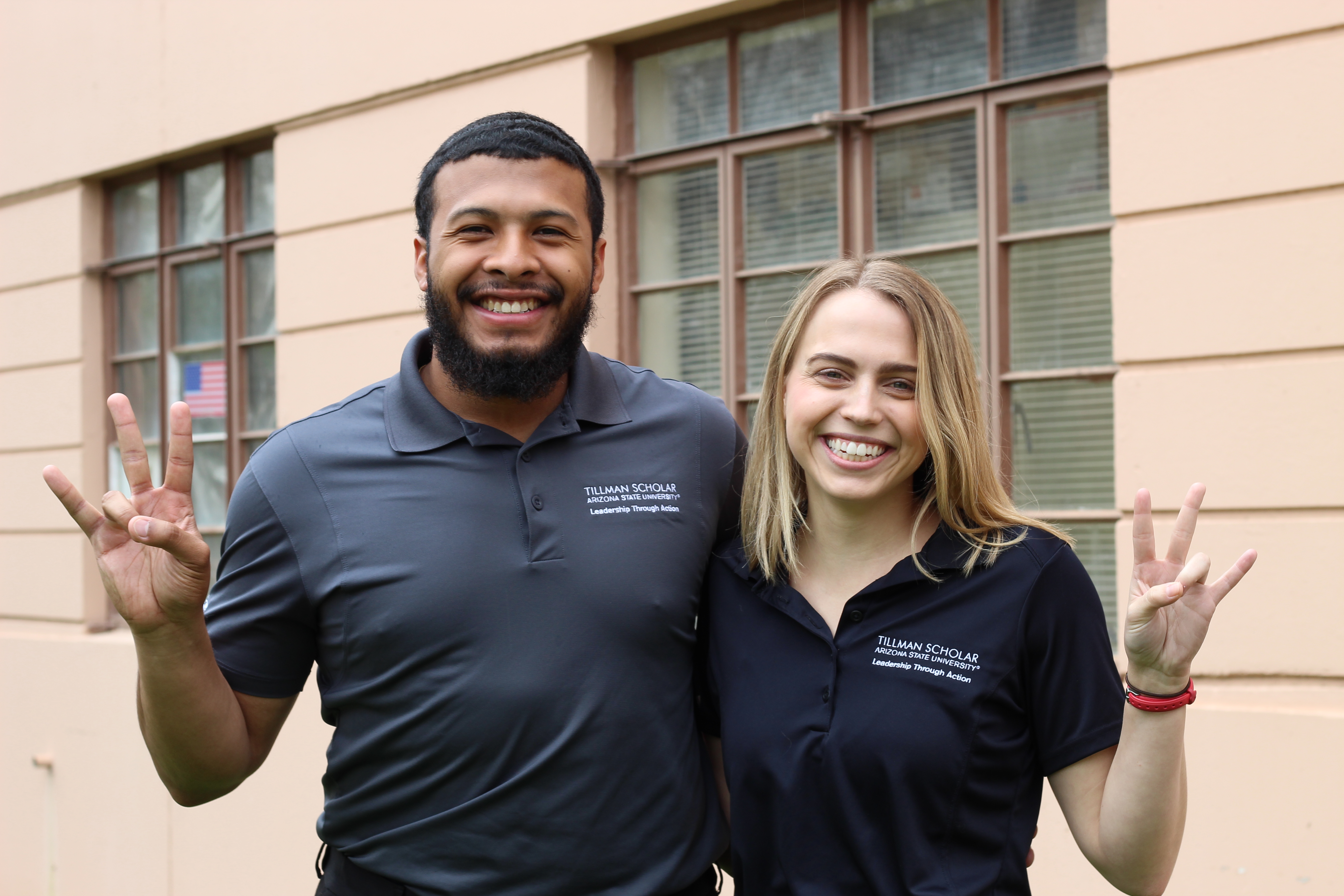Have M&G Dollars to spend? Use them to fight hunger
Senior computer information systems major Elijah Smith knew what it was like to experience food insecurity growing up in Los Angeles. He remembers attending an after-school program for homework help. He didn’t need help with his studies, but at the program lunch and cafeteria staff would donate Uncrustables sandwiches and milk for hungry students.
“The biggest piece of [going to ] that was the food,” he said. It took a lot of stress off his mother having supplemental food for him and his sister, Smith said. It was difficult for his family to make ends meet on his dad’s salary as a public school teacher.
Years later, Smith remembered this experience when he had to launch a venture project as a Pat Tillman scholar at ASU. He wanted to fight hunger, and his friend since freshman year Jenna Fitzgerald was excited to join him to build an engaging, sustainable project.
The two had served as Camp Carey facilitators together and worked on a plan to encourage students with a meal plan to use their surplus M&G Dollars that were expiring at the end of the school year to donate nonperishable food to local food banks.

M&G Drive founders Elijah Smith and Jenna Fitzgerald
Fitzgerald, a senior marketing and psychology major, knew she wanted to help bring Smith’s project to life.
“I think it’s such a unique and creative way of getting the community together. It’s very tangible and easy to get people involved,” Fitzgerald said. “ [Giving back to the community] can be something as simple as buying a nonperishable at the POD and donating it in a bin outside, and that is making an impact.”
Their project, the M&G Drive, piloted in April 2019 on ASU’s Tempe campus with bins placed outside POD markets to collect items benefitting Valley of the Sun United Way and St. Mary’s Food Bank. If students or staff with meal plans have M&G Dollars that are expiring, the bins encourage them to purchase specific nonperishables that local food banks need to put the surplus funds toward fighting hunger in our community
Smith was inspired to put surplus M&G Dollars to use after he realized that he and his friends were spending expiring funds on things they didn’t need at the end of the semester, such as speakers. Smith decided he wanted to find a way to divert M&G funds to make a difference in the community.
“We want to provide students with an outlet for their M&G that might be forfeited at the end of the semester or academic year and divert those funds that would’ve been forfeited into being productive to buy nonperishable food supplies for our community,” he said.
Since M&G Dollars are used by many freshmen and sophomores, Smith and Fitzgerald see the M&G drive as being an especially effective way to instill a community mindset in the younger students. Smith has been a community assistant for University Housing since 2016, so he appreciates how sharing good habits and financial literacy lessons are important within the Sun Devil community.
“[It’s all about] changing the mindset of the way people can make an impact,” said Fitzgerald.
Smith and Fitzgerald’s project was something they also worked on as part of their Millennium Fellowship through the United Nations. The Millennium Fellowship program brings together students who are passionate about changing the world.
Part of the vision for Millenium and Tillman projects is that they should be sustainable. So Smith and Fitzgerald started the M&G Drive on the Tempe campus and hope to expand to the other ASU campuses organically and systematically. Their long-term goal is for other universities to start similar projects. After they graduate, some good friends have agreed to continue the M&G Drive effort at ASU.
“Hopefully we can start it out pretty small and see, especially with close supervision with this first initial rollout, how successful it can be and how we can modify it for future years,” said Smith.
Since there were around 10,000 first-time freshmen across ASU last year, the M&G Drive’s current goal is to raise around $10,000 of diverted M&G funds in their pilot.
They believe that if students are given the option to donate some of their M&G to feed those who don’t have enough food, it will create a tangible difference in the community.
“At the end of the day, anybody can spare a dollar,” he said.